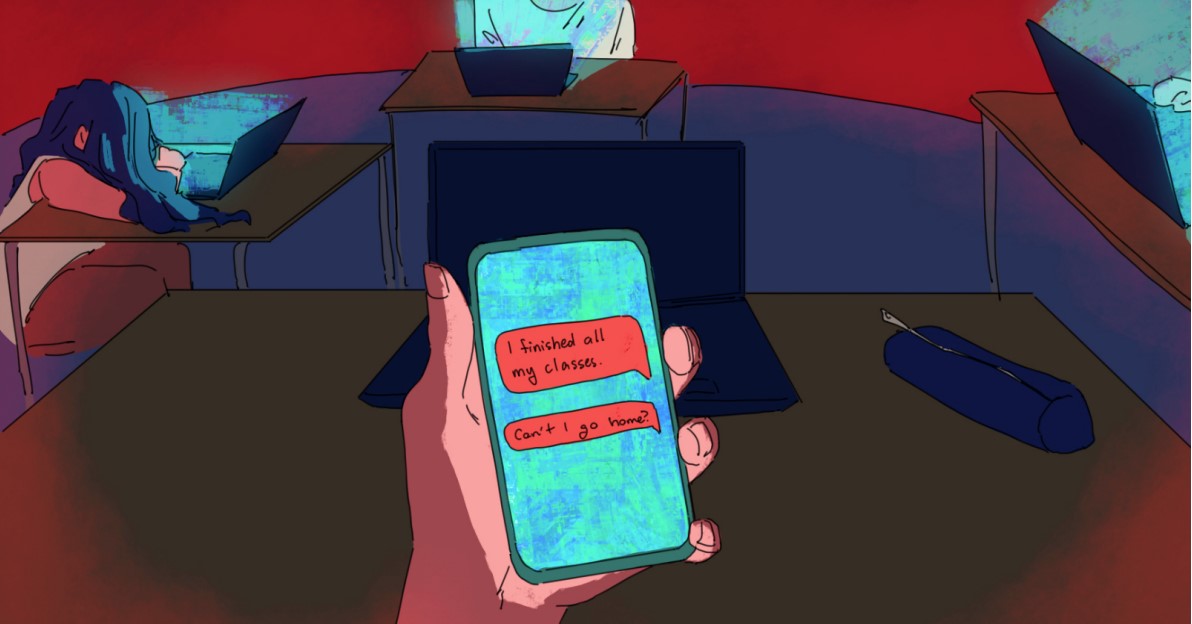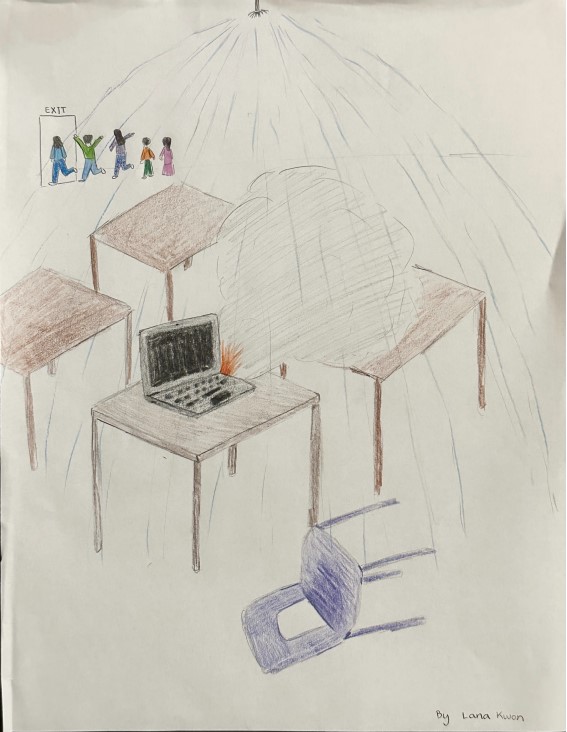Every student at Woodbridge High school, regardless of their grade or age, is required to attend a tutorial —a 30-minute period at the end of the school day with a teacher of their choice —three times a week. While at first glance, dedicating a time in the school day for extra help can seem like a good way to support students, in reality it wastes instead of making use of time.
Tutorials are often a waste of time for students. Placing them at the end of the day is an inconvenience for students because it’s after all tests and classes. As Woodbridge student Chaitra Kasula states, “By the end of the day, [students are] all tired” and they “just want to go home”.
It’s hard to use a tutorial as valuable study time because students are already drained from classes throughout the day. The last thing students want to do is sit in a class for the last thirty minutes of school on their phone, waiting for the bell to ring when they can do the same thing at home.
After students finish their last period, a good number of students skipping tutorial each day can be observed. According to a previous article by the Golden Arrow on tutorials, opinion writer Rebecca Sanchez wrote, “Tutorial has become an unnecessary obstacle. A classroom at tutorial is almost always full of students doing everything except what they are supposed to be doing. We see
those talking to their friends. Some are on their computers playing games. Others have their heads on the desk with their eyes closed. From observation, only a small percentage are doing work.”
The tutorial itself is not a bad concept. Students do need time to catch up on school work and study, etc. But having a tutorial at the end of the day when students are tired, drained, and ready to go home is not the solution.
Tutorial is useful for students if they need extra help or makeup assessment time. Some may argue that if and when students are absent or when student athletes are dismissed early to a game, they miss important lectures and sometimes assessments. They are more susceptible to falling behind and have few opportunities to make up tests or ask teachers questions. However, Kasula, also a student athlete at Woodbridge High , states that she still preferred tutorial earlier in the day because she still continues to miss class time at the end of the day to leave early, and tutorial earlier in the day was more helpful in order to allow her to catch up on work she still needed to do.
An article written by James Bacon on edficiency.com states, “While schools might often decide to implement a Tutorial Period with the idea that they are focusing on students who are
struggling, even high-performing students who are given the opportunity to attend supplemental instruction sessions in a smaller setting with more individualized attention can benefit, whether through their grades, test scores, or other metrics.” Bacon discusses the benefits of having a tutorial time for both students and teachers. These benefits include providing additional time for students and teachers in which teachers can offer and students can get individualized attention and help. Teachers can get to know students better and give more detailed feedback and students don’t need to pay for extra tutoring and transportation.
However, in reality, these benefits hardly apply to the majority of Woodbridge High’s students. The number of people who waste their time in tutorials compared to the people who need to make use of it is greatly disproportionate. The disadvantages for having a tutorial at the end of the school day far outweigh the few potential advantages.
Moving the time of tutorial will be beneficial for students because it still allows the time needed with teachers, however it won’t be at such an inconvenient time in the day. The purpose of the tutorial is to be used as a study period, however students cannot use this time efficiently if it is at the
end of the day.
Our proposed solution to this is moving tutorial earlier in the day, as well as making it optional. Optional meaning you are not required to be in a classroom, and may use tutorial as a break
time as long as students are still on campus.
According to a UConn study on the effects of break time in children on kids.uconn.edu, free time during school hours helps children stay more engaged and focused. When tutorial is at the end of
the day, any focus that students gain from it cannot be used as there are no other classes after. In addition to that, tutorial being earlier in the school day will help prepare students for any upcoming assessments or presentations they have in the following periods.
Students need time to clear their mind, do their work, and prepare for the day. Moving the tutorial time to the morning promotes engagement in students and gives them the opportunity to make
better use of their time. In order for the school day to be spent efficiently, tutorial being moved to the morning is the better solution.












